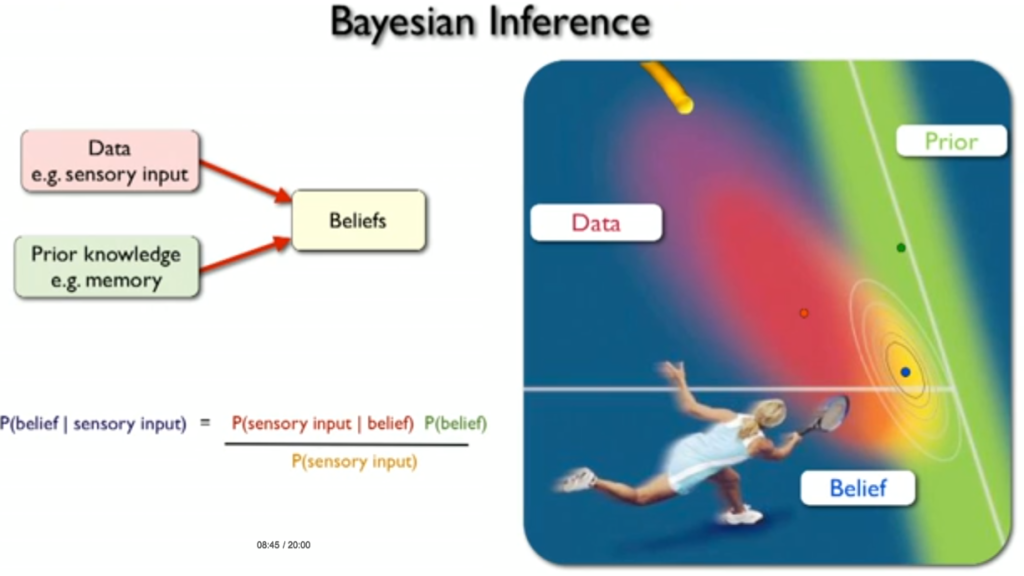How To Predict Anything
I was recently watching a TED talk by David Wolpert, a neuroscientist, who does an excellent job of explaining how the brain works. His main idea is that the brain exists solely to direct movements, whether it be your vocal chords for speech or hand movements to signal hello and goodbye.
He makes a strong point that our movements are predicted beliefs based on sensory input (new data) and prior knowledge (memory). Here is one of his key slides: (Click to enlarge.)
This is a classic Bayes prediction model. Here we can see that the tennis player is moving herself and her racket to the point where all of the data intersects. Her prior training tells her that the ball will likely bounce somewhere towards the right out-line. And then the sensory input, seeing the ball move through space, gives her the information she needs to predict exactly where and when the ball will bounce.
This prediction model is repeated literally thousands of times each day as you make every little movement. Prior knowledge accompanied with sensory input allow us to make smart predictions in any scenario.
For example, with Glider or email spam filters, predictions are based on a primary corpus of data (memory) compared against new text (sensory input) from each email. Over time the classifier becomes incredibly accurate as the memory increases.
Now let’s try expanding this line of thought to even more broad applications in daily life. Think about a government official trying to formulate a new education policy… It would be helpful to have learned the prior history of education policy as well as recent information such as a declining graduation rate that makes action critical right now.
If you’re interested in this topic you can learn a lot more in depth here:
http://en.wikipedia.org/wiki/Naive_Bayes_classifier

Machine Learning Cheat Sheet

